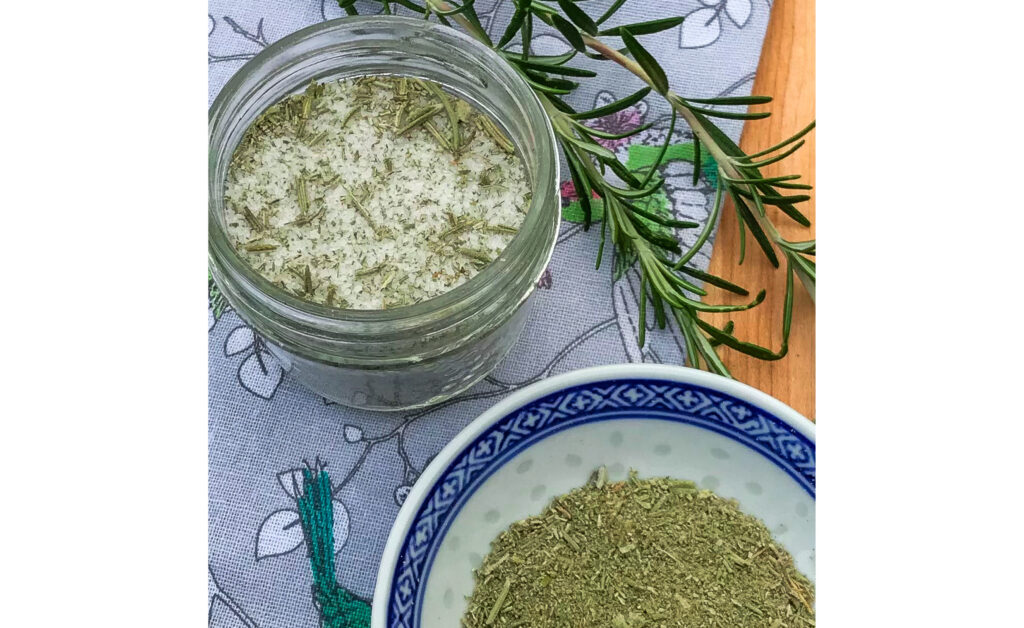story and photos by Cynthia Philp –
Many of our beloved plants were once carefully cultivated and tended centuries ago in kitchen or physician gardens. Although we don’t know when rosemary (Salvia Rosmarinus) was first cultivated, we do know that by 5000 BC, Egyptians recognized the usefulness of this fragrant plant.
Rosemary is ideally suited to our modified Mediterranean gardening climate – it survives our mild winters and thrives on our hot extremely dry summers. It appears unbothered by disease or pests. Rosemary often cheerfully defies the season and blooms in December with hundreds of delightful florets. Today, rosemary plants can be purchased in a variety of sizes, upright or trailing, with flowers that can be blue, pink or white. It does well in different garden soils and container pots.
Another reason to adore rosemary is that the plant can be harvested at any time. It is content to sit and wait prettily, until I have the desire for something fresh from the garden.
To harvest, rosemary tolerates a hard prune at any time, even in winter or early spring. Be careful to never cut more than 2/3 of the plant down at once. After rinsing the stems and leaves well, I’ll strip off some of the needle-like foliage and toss it into a pot of boiled and buttered potatoes for a side dish that tastes and smells like summer.
For the remainder of the branches, I’ll pat them dry and lay out the stems on a tea-towel lined baking tray, which I tuck away in a spot with good air circulation. Occasionally, I’ll toss the branches to check for even drying – the drier the stems are, the easier it is to strip away the leaves. I discard the stems in the compost bin and continue drying the leaves until they are ready to be stored in a clean jar. While the leaves can be stored as is, I find it easier to pulverize them in a coffee bean grinder I keep for this purpose.
Rosemary salt is an easy-to-make food seasoning that is special enough to give as a gift. In a small jar (125 ml), mix together 2 tablespoons of table salt with 2 tablespoons of dried and ground rosemary leaves. Then fill the jar with coarse salt, attach the lid and shake until blended. This seasoning salt, free from additives and fillers, is easy to add to dishes as diverse as fried eggs to dipping oils.
All parts of the plant are edible, but its intense, pungent scent is immediately noticeable – rosemary stems were once harvested to make perfume. As an evergreen, it is now associated with remembrance, elevating this tough and useful little shrub to a meaningful touch of green in my garden.




